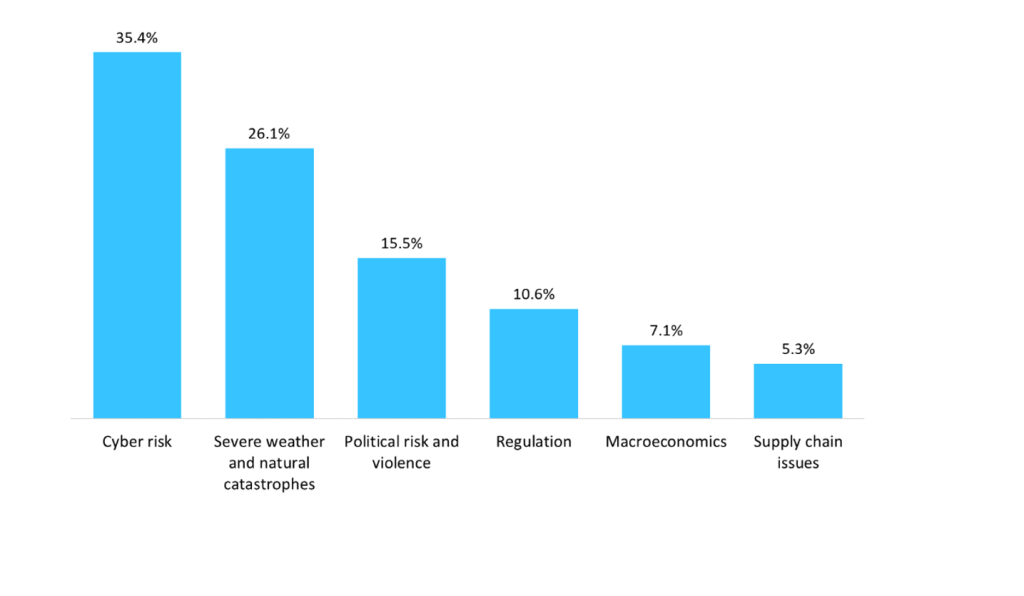Historically, the insurance sector has not been known for its innovation power, being relatively slow to embrace and adapt to new technologies. However, in the past few years, emerging risks and new consumer demands have created a host of challenges for insurers. The industry’s response to these challenges has driven significant innovation across all insurance segments – including personal and commercial lines, life and health – with technology ecosystems transforming the market in profound ways. Andrew Harley and John Heidelberger write
The pace of change has also been accelerated thanks to tremendous increases in the volume of data and the growing power of artificial intelligence. This transformation is also disrupting and re-configuring the entire insurance value chain – from customer services and product design; to pricing and underwriting; through to claims and supplier management.
In this increasingly digital world, insurers and brokers are having to take a more systematic approach to innovation by working with a growing number of different technology providers that offer solutions that, in combination, allow them to deliver their business strategy. Incumbents have understood that they must choose to disrupt their own offerings or face disruption from outside sources.
Rethinking how insurers innovate and grow
As traditional industry borders fall away, the future of insurance stands to be greatly influenced by platforms and ecosystems. Rather than posing a threat, this offers insurers huge potential to leverage collaboration with ecosystem partners which in many cases do not have an obvious link to the insurance sector.
Ecosystems have been steadily rising to the top of the board and C-suite agenda for years now, demonstrating how the right business model and value proposition, right partners and strong tech and data capabilities can drive growth and value creation.
Connecting to insurance technology ecosystems will also help insurers to keep pace with a constantly changing world, to scale as market needs change, collaborate on innovative solutions to address ongoing challenges, and build meaningful experiences to better serve customers.
The potential costs and risks for insurers, however, associated with working with so many different companies and technologies are considerable. So a key step in today’s digital world is to be able to effectively forge new partnerships that will boost their digital transformation.
How well do you really know your competitors?
Access the most comprehensive Company Profiles on the market, powered by GlobalData. Save hours of research. Gain competitive edge.

Thank you!
Your download email will arrive shortly
Not ready to buy yet? Download a free sample
We are confident about the unique quality of our Company Profiles. However, we want you to make the most beneficial decision for your business, so we offer a free sample that you can download by submitting the below form
By GlobalDataComplexity, fragility and existential risk
The current market offers significant opportunities to insurers that are able to select multiple technologies and bring them into their own ecosystem, adopting a strategy of extreme modularisation in order to assemble highly heterogeneous suites that deliver real business value.
Third-party plug-ins and add-ons to a core system help insurers benefit from a data-rich ecosystem without added complexity. With plug-ins and add-ons, insurers see a standard interface that makes it easy to monitor and manage their digital assets in secure and efficient ways.
At the same time, while insurers should always aim to build ecosystems to be as resilient as possible, they are inherently complex and fragile.
In nature, an ecosystem consists of different organisms which interact in and with a common environment, all depending on each other to survive and thrive. A technology ecosystem is no different – essentially a group of what might be a diverse network of different technology providers that will each typically support each other to some degree or another to benefit their own and shared clients.
For this reason, it is important to consider how different technologies are going to live in an insurer’s own ecosystem. How do they connect and how are they managed? Do they integrate and play well with all the other capabilities insurers are trying to build to bring value to the market? If not done correctly, an ecosystem can actually destabilise or add risk to the organisation.
Collaboration is key
Partnerships and collaboration are central to helping insurers make the most of the opportunities that an ecosystem of providers has to offer. This means choosing the right technology partners is a crucial step toward successfully delivering an insurer’s business strategy. Equally, there needs to be a rigorous, robust process for insurers that are selecting individual tools and technologies to join their own ecosystems. The process must be intentional, strategic and managed.
Insurance professionals need to understand the current state of the industry, maintain a forward-looking vision in their approach to business goals and, more importantly, stay empathetic toward customer challenges and pain points. This must be balanced with the technical skills they possess to bring new capabilities and solutions to market. By tapping into wider insurance ecosystems, an insurer will find that collaboration will give way to the best ideas, innovations and solutions. These partnerships are able to unlock the technological power of AI, machine learning and automation in a way that makes sense for insurance.
Ecosystems are the bridge to a future characterised by a connected insurance value chain, nimbler and more efficient operations, that will help insurers expand core offerings and go to market faster than ever before. This means they can capitalise on market opportunities by meeting evolving demands and delivering experiences that delight consumers.
In the fast-moving insurance industry, ecosystems success is increasingly correlated with overall market leadership. Done well, ecosystems can help companies transform, modernise, grow and serve their customers better. This evolution offers huge potential to leverage collaboration with ecosystem partners and create better underwriting models, seamless digital customer journeys, improved marketing effectiveness, risk selection and pricing.
Andrew Harley is a Senior Director in WTW’s Technology team and heads WTW’s strategic partnership programme. John Heidelberger is Global Head of Technology Consulting for WTW.








